.
5.06.2016
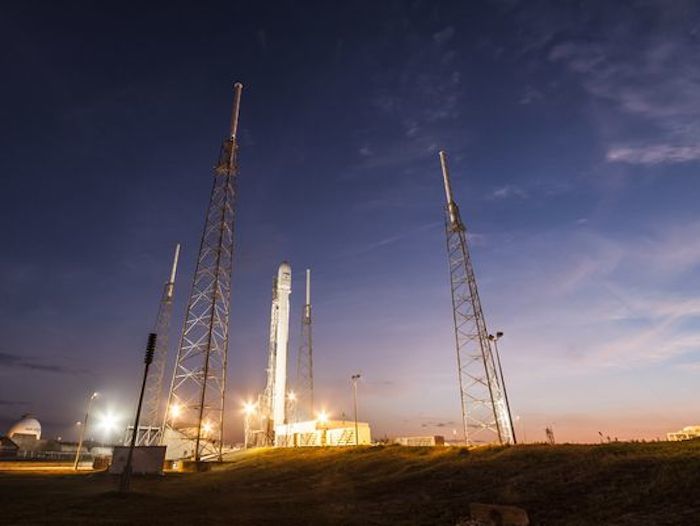
SpaceX plans to launch its next mission from Cape Canaveral less than three weeks after the last one. A Falcon 9 rocket is targeting a 10:32 a.m. liftoff on June 14, at the opening of a 45-minute window.
The launch of a pair of commercial communications satellites also affords SpaceX an opportunity to land the first stage of a Falcon 9 rocket at sea for a fourth consecutive mission.
The most recently recovered booster, which launched and landed on May 27 returned to Port Canaveral on Thursday, leaning noticeably on the deck of SpaceX's "drone ship."
"Rocket back at port after careful ocean transit," SpaceX said in a tweet. "Leaning back due to crush core being used up in landing legs."
SpaceX CEO Elon Musk said the rocket landed at close to the top speed it could handle, straining the legs' honeycomb "crush core" shock absorption system.
"Easy to replace (if Falcon makes it back to port)," Musk said on Twitter.
At Port Canaveral, SpaceX was expected to take days to offload the rocket with a crane and remove its landing legs before transporting it to a hangar at Kennedy Space Center for inspections. The booster is the third that SpaceX has landed at sea and fourth overall as it works to make rockets reusable.
Quelle: Florida Today
-
Update: 14.06.2016
.
Forecast fine for SpaceX Falcon 9 launch Wednesday
Wednesday is shaping up to be a nice morning for SpaceX to launch a Falcon 9 rocket and a pair of communications satellites from Cape Canaveral Air Force Station.
There's an 80 percent chance of conditions acceptable for a liftoff from Launch Complex 40 at 10:29 a.m., the opening of a 44-minute window.
"The primary weather threat will be cumulus clouds," reads the forecast from the Air Force's 45th Weather Squadron.
SpaceX on Sunday successfully test-fired the rocket's nine Merlin main engines to conclude a countdown rehearsal.
On top of the 230-foot rocket are satellites owned by two international operators, ABS and Eutelsat,
They are the second pair of Boeing-built spacecraft featuring all-electric propulsion that SpaceX is launching for the companies in a little over a year.
For a fourth consecutive mission, SpaceX will try to land the Falcon 9's first stage on a "drone ship" stationed off the Florida coast.
Quelle: Florida Today
---
Update: 12.44 MESZ
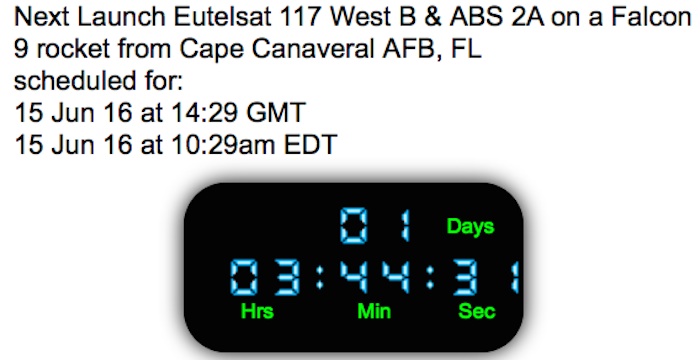
...
Update: 15.06.2016
.
SpaceX set to launch satellites for European company Wednesday
SpaceX Falcon 9 rocket will carry two broadcast communication satellites into space from Florida’s Space Coast on Wednesday.
Eutelsat’s 117 West B and ABS-2A satellites aim to improve reception in South America and Central America. The window for liftoff opens at 10:29 a.m.
Once the Falcon 9 delivers the satellite, the rocket will once again try to land on its “Of Course I Still Love You” ocean barge. The company has recovered four rockets as it moves toward reusability.
SpaceX has successfully achieved that landing four times so far, as it continues to hone its launches that will eventually send a rocket to Mars.
After SpaceX’s last rocket launch in May, the company paraded the recovered rocket through the streets of Port Canaveral, as it made its way to a storage facility at Kennedy Space Center.
That facility now has four rockets being stored there.
SpaceX has said that it expects to relaunch one of its rockets this summer.
The two-stage Falcon 9 rocket being used for Wednesday’s launch will eventually be the vehicle that will carry humans into space.
Quelle: Orlando Sentinel
...
Update: 14.40 MESZ
.
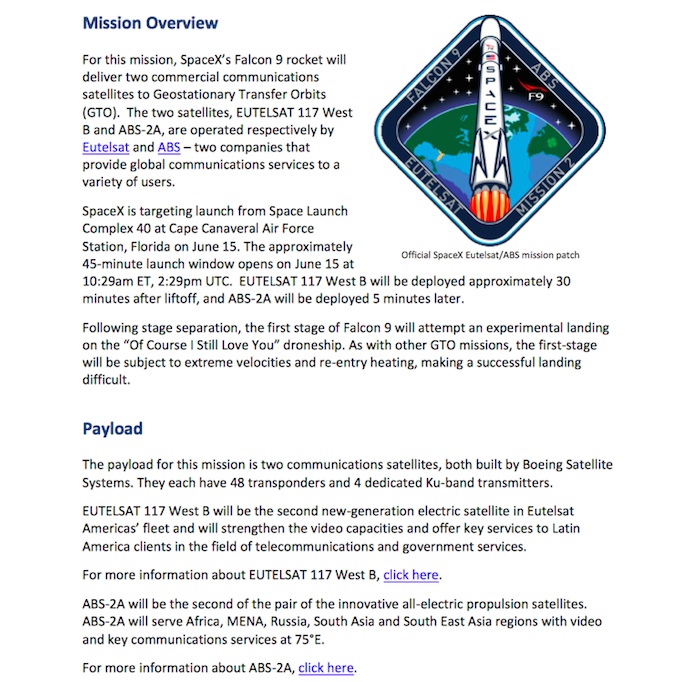
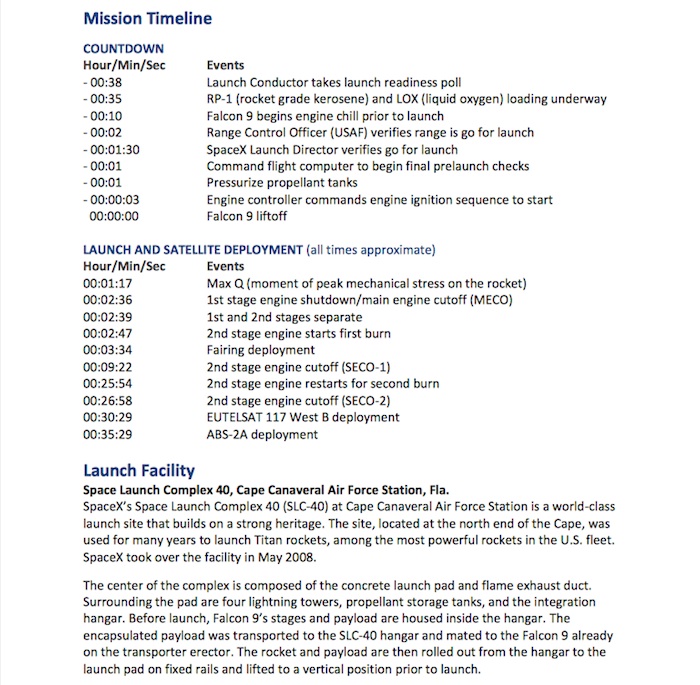
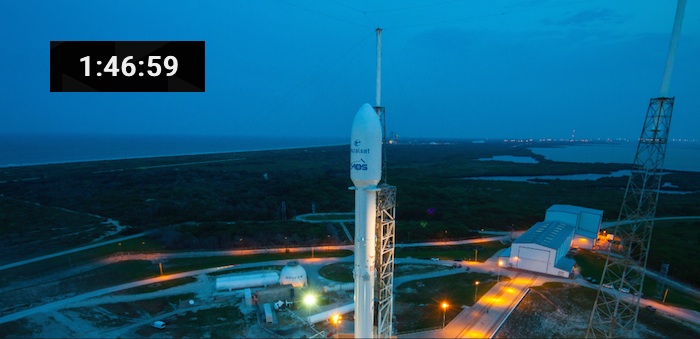
Quelle: SpaceX
...
Update: SpaceX-LIVE 16.15 MESZ
.
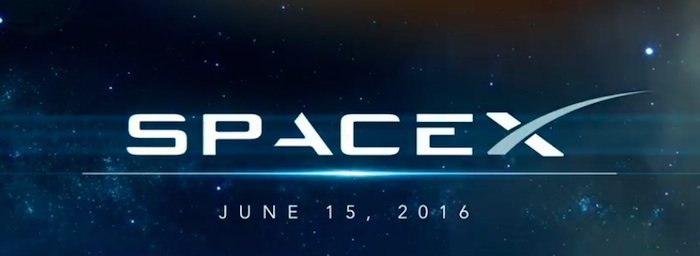
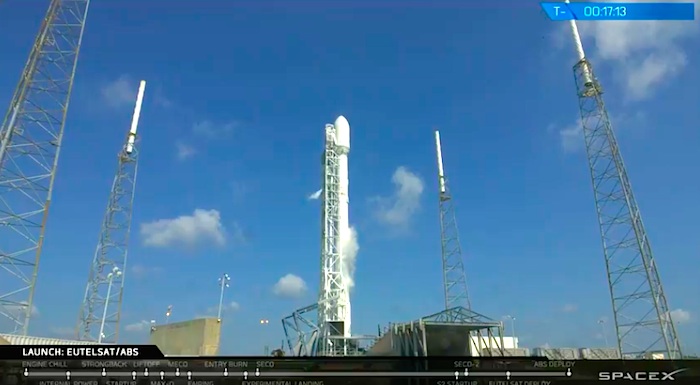
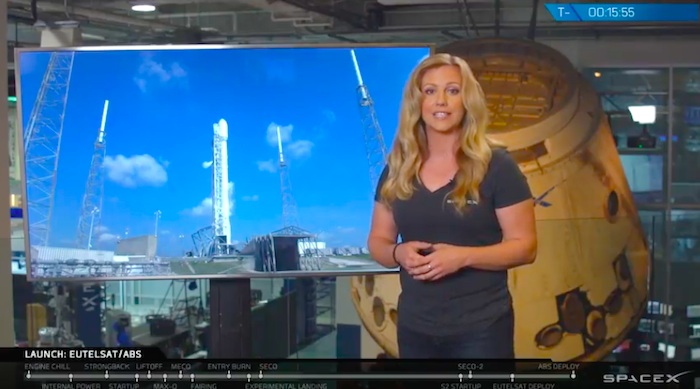
...
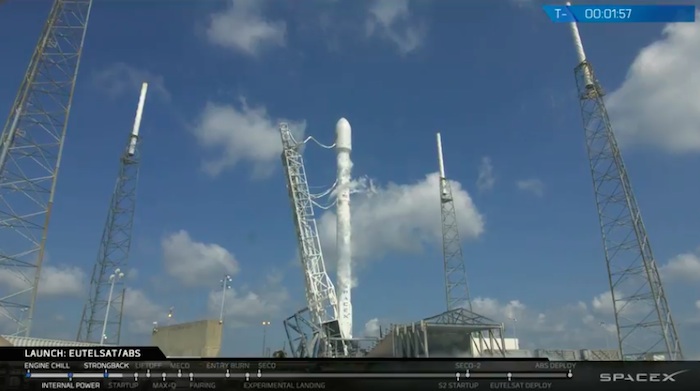
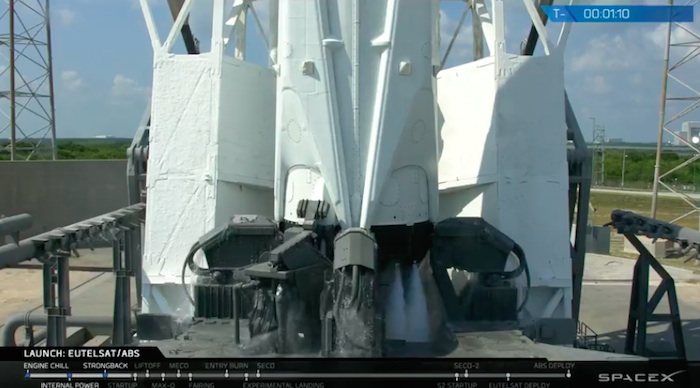
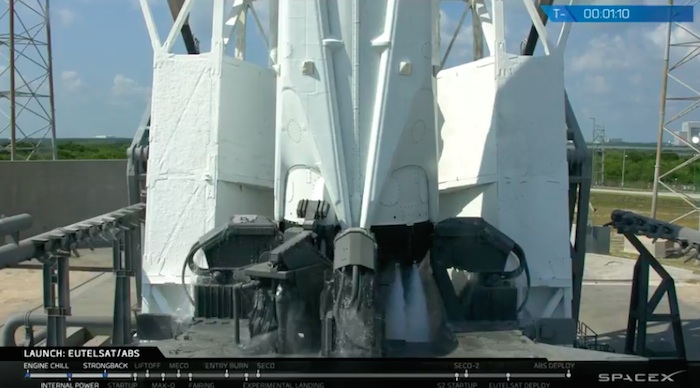
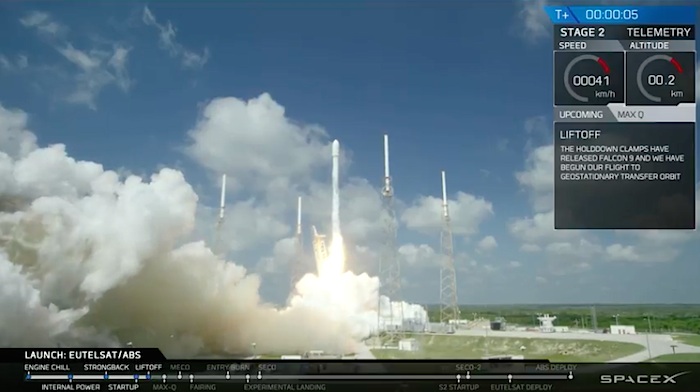
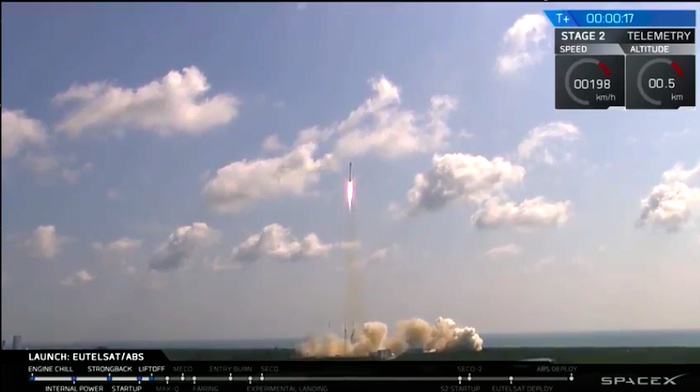
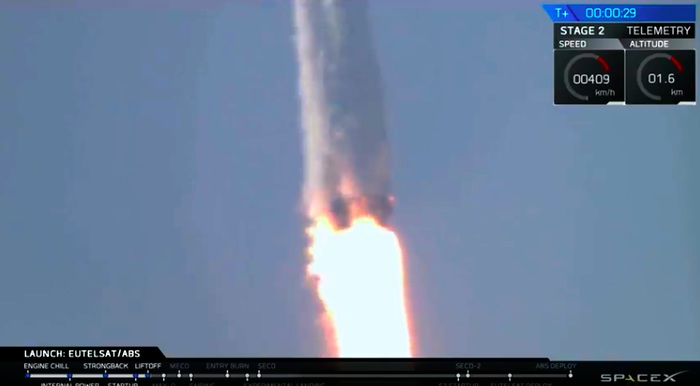
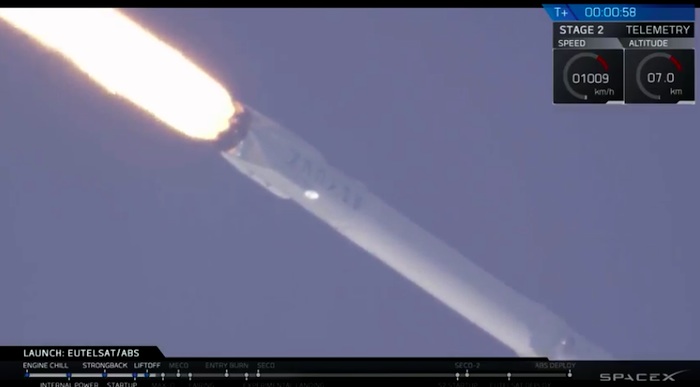
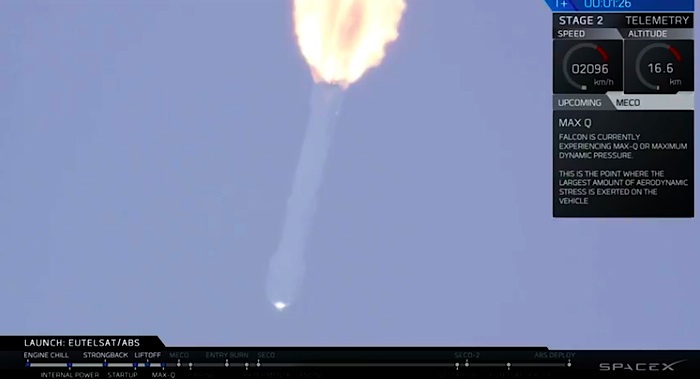
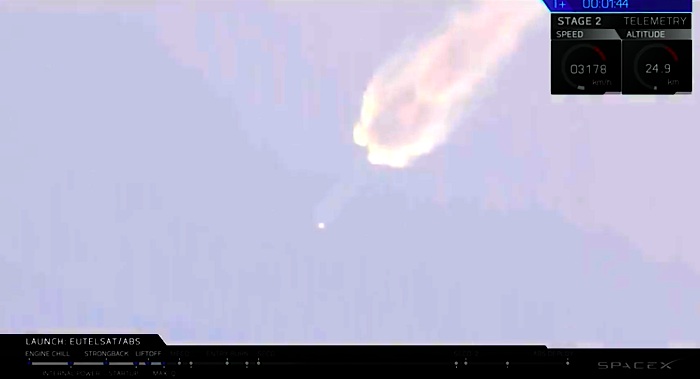
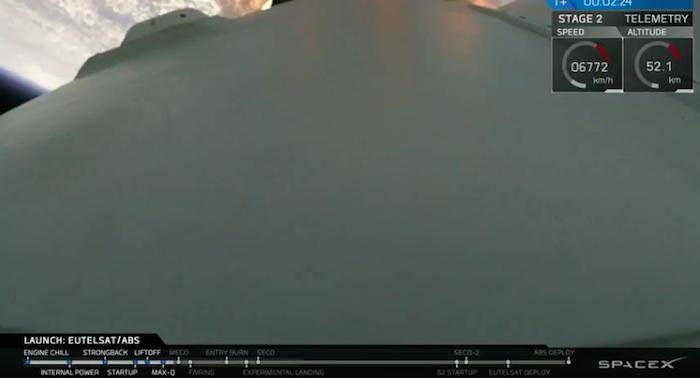
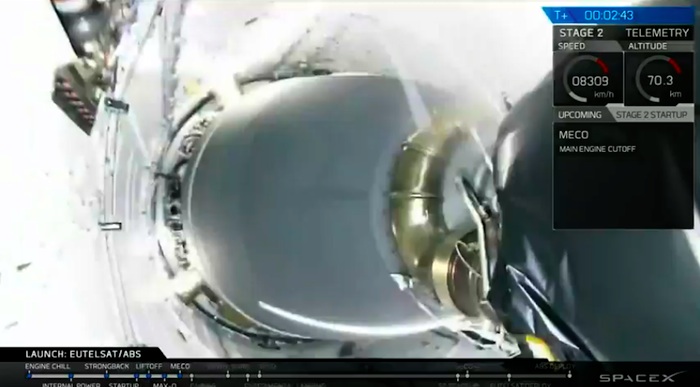
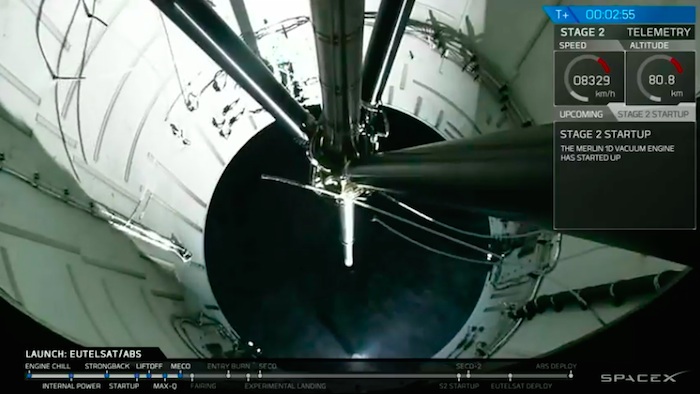
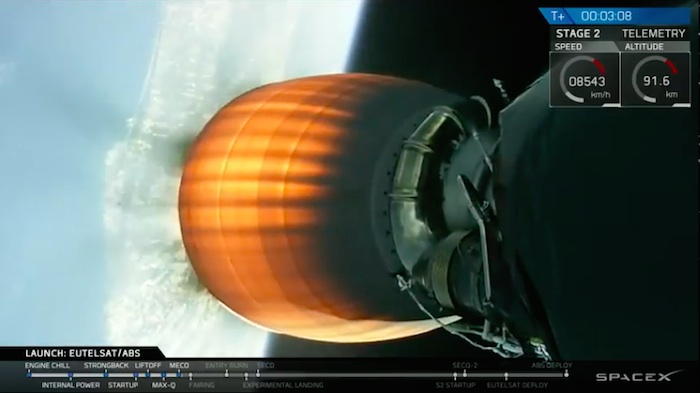
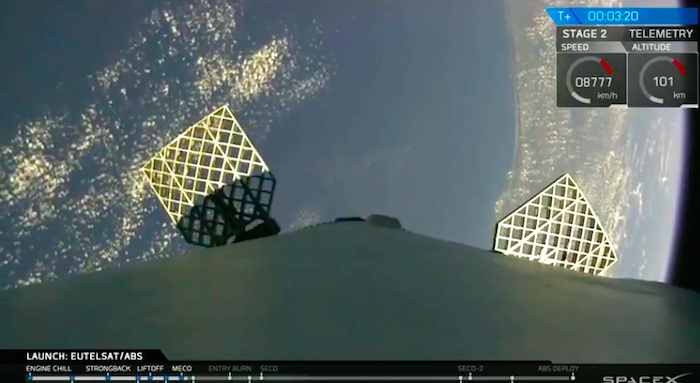
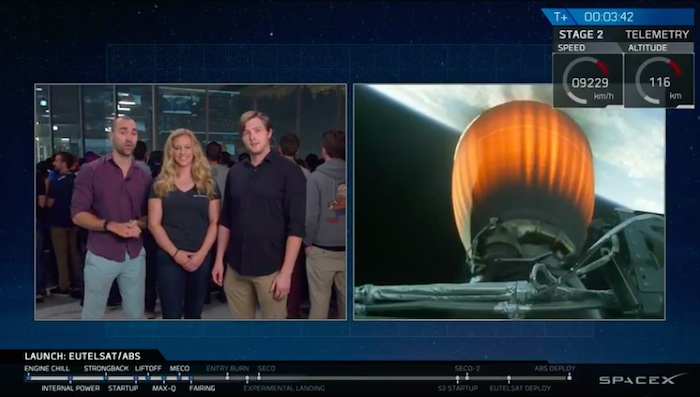
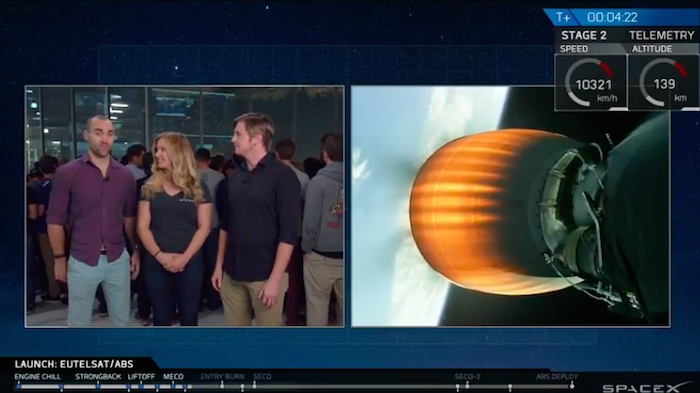
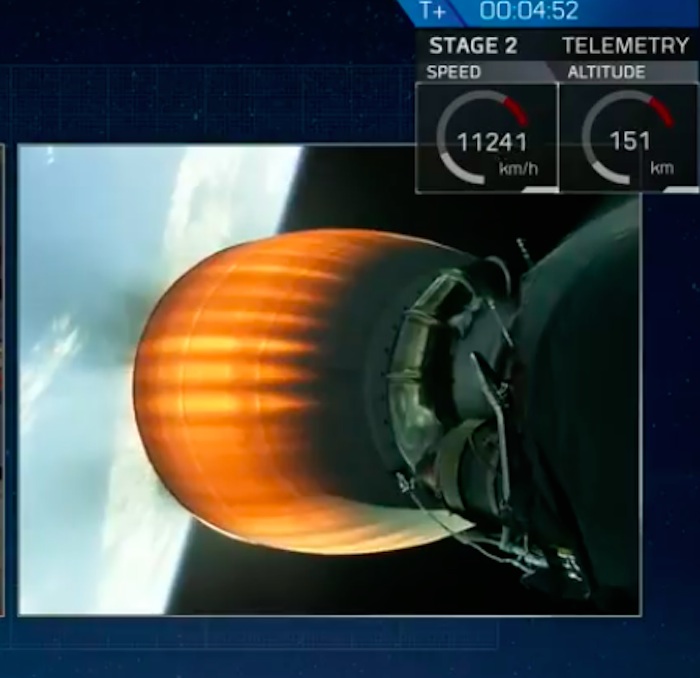
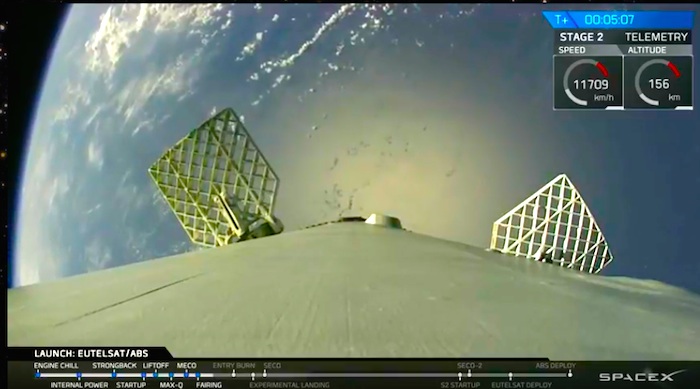
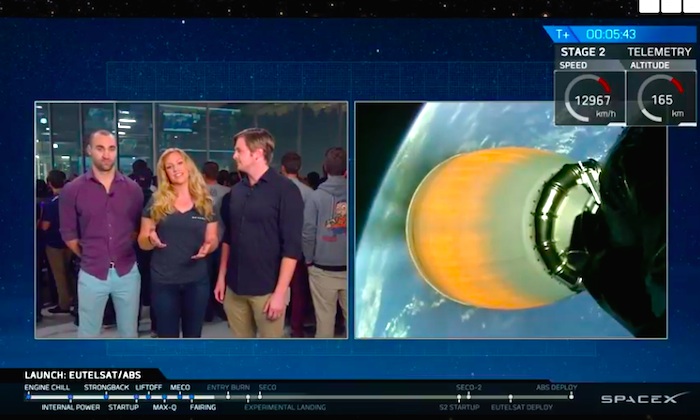
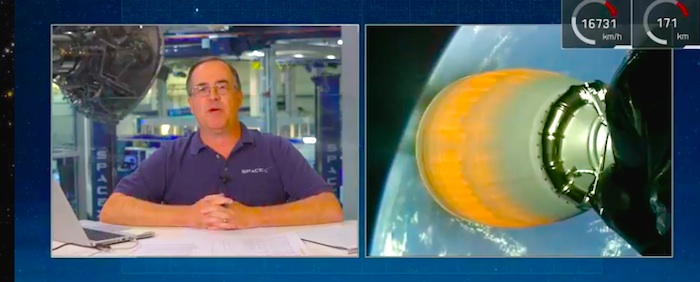
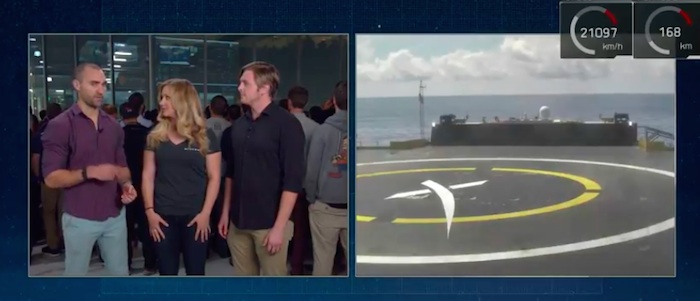
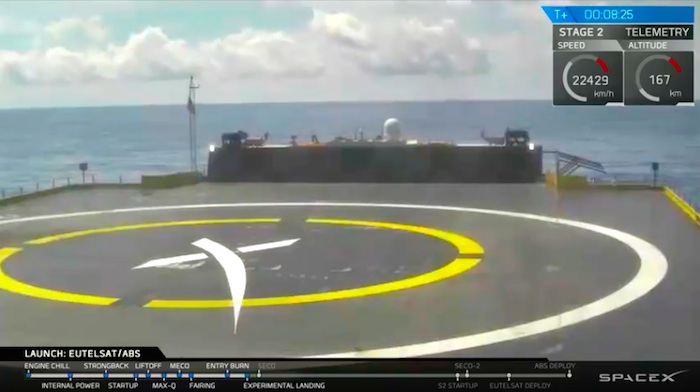
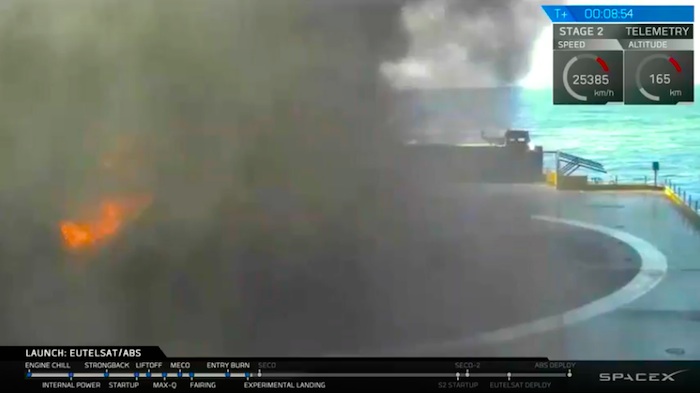
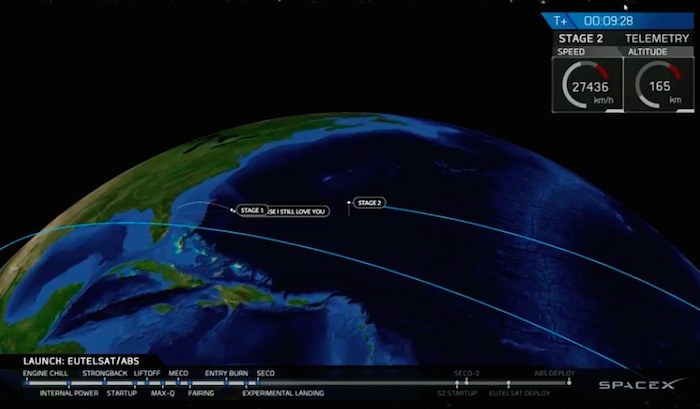
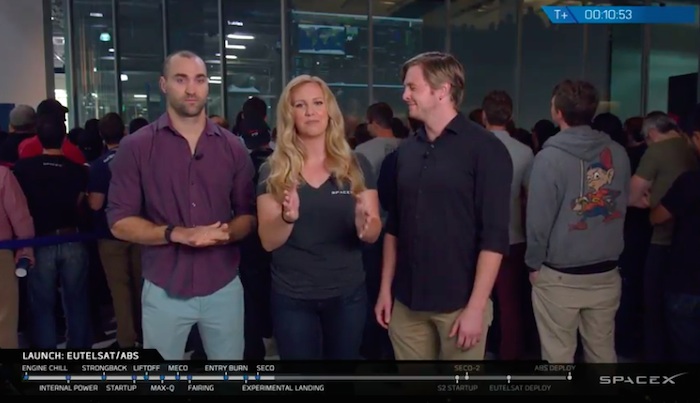
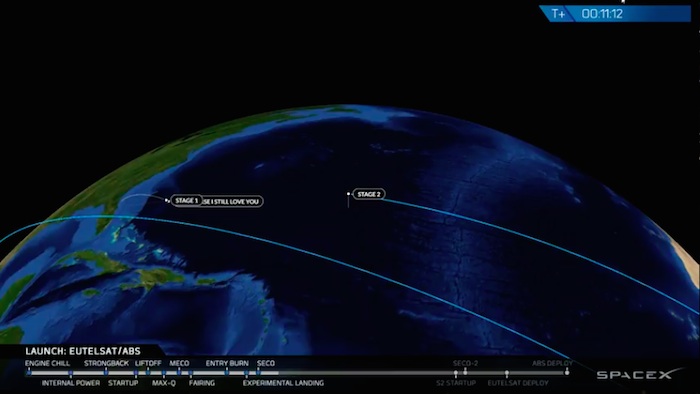
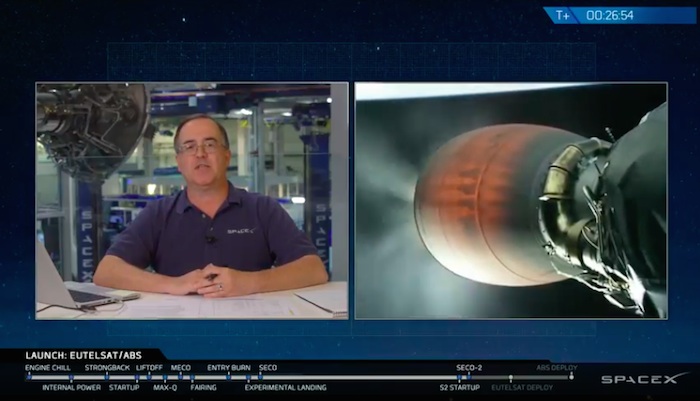
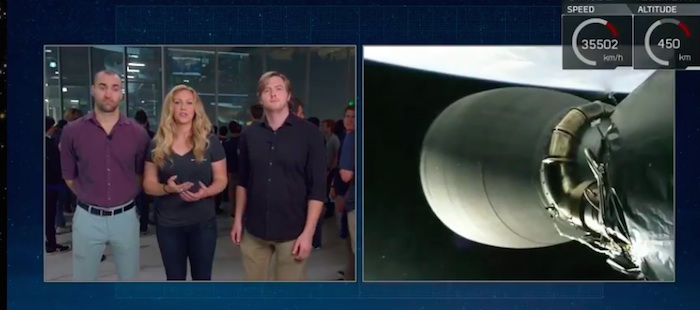
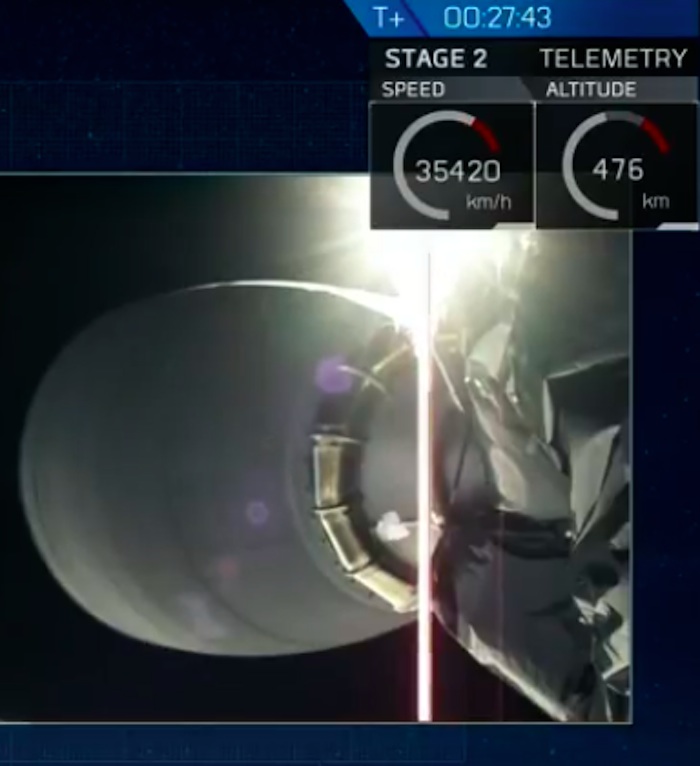
Quelle: SpaceX-LIVE
-
Update: 16.06.2016
.
SpaceX’s latest rocket landing ended in a ‘rapid unscheduled disassembly’
Elon Musk's SpaceX failed to complete what would have been its fifth landing of a reusable booster rocket Wednesday, a down note on what appeared to be an otherwise successful mission to deliver two Boeing-built communication satellites to high orbit above the Earth.
"Falcon 9 was lost in this attempt," the company said in its webcast.
As the satellites headed on their way Wednesday, the booster rocket began its descent toward the ocean for a landing on a special floating platform. Video footage of the attempt seemed to show the booster touching down, then flames, before the picture froze.
As with previous attempts, SpaceX had said landing the reusable booster rocket would be made more difficult by the fact that it would be falling from higher up. And, the company said, the rocket would have less fuel than normal to control its descent. SpaceX founder Elon Musk later tweeted that it appeared the the thrust in one of three landing engines was insufficient, causing the rocket to come in far too fast. In what he said may have been SpaceX's "hardest impact" ever, the booster ultimately suffered an RUD, or "rapid unscheduled disassembly." Upgrades to compensate for the problem could come by year's end, said Musk.
Quelle: The Washington Post
4725 Views
